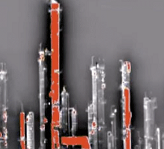Resources
Manufacturer Webinar Calendars
Security Planning and Specifying Indoor Gunshot Detection
We know that your clients rely on you to deliver the highest level of advice and support. SDS wants to become your trusted source for gunshot detection technologies. This webinar will help you better understand:
- Why clients ask for indoor gunshot detection solutions
- Examples of gunshot detection projects from the design phase to project completion
- The technology behind the industry’s leading gunshot detection system
- How the technology is deployed (sensor placement, tools, etc.)
- How the product performs: recorded live fire demonstration
- How the product integrates with other security assets like access control or VMS
Link to Webinar
Using Thermal Imaging for Fire Detection

Originally presented March 24, 2021.
This pre-recorded webinar, presented by Opgal, provides interesting perspectives on thermal technology and its use in hot spot and flame detection up to 3.5 miles. Material is available for download in pdf and PowerPoint formats.
Link to Webinar
How Effective Are Thermographic Cameras?

Virtual CONSULT Program from 10/26/20
Consultants have had the challenge of helping clients with the challenges of quickly deploying or adapting thermographic technology (whether it works or not) into existing operations and managing performance expectations. Issues have included performance measurement, false and/or highly exaggerated manufacturer claims, effectiveness of temperature verification, compliance (privacy, HIPAA, CDC medical devices, etc.), integration with operations, additional queuing, and integration with architecture. These challenges have led to additional COVID-19 inspired considerations such as the entire pre-screening process and its application to all building entrants. What was once a screening process primarily limited to visitors has become, in many cases, a process applied to all facility entrants. If a person triggers as a potential threat, how do you handle it from a privacy, contract tracing, access, and customer service standpoint? Hear an informed panel discussion on the technology’s effectiveness and deployment issues.
View the Session Video
Thermographic Camera Session Slides
What’s the Best Way to Specify Integrated Systems?

Virtual CONSULT Program from 10/26/20
CSI MasterFormat as it relates to security (Div 08 and Div 28) is largely structured around components – cameras, readers, etc. Increasingly, however, systems are specified as a unified or integrated collection of sub-systems. There is some newer provision for this in Div. 28 (see 28 05 45, Systems Integration and Unified Systems) and added flexibility within the MasterFormat framework. Is this adequate or should a rethinking of MasterFormat be considered. Hear from several consultants who are wrestling with this issue and from CSI with a broader construction industry perspective.
View the Session Video
Integrated Systems Session Slides
Plugging into Managed Services

Virtual CONSULT Program from 10/26/20
Remote Managed Services, including cloud-based video and access control and network monitoring, has become an important component of many systems integrators' offerings, particularly in the COVID-19 environment. Further, cloud-based services are a key element of both the security and IT landscapes, but have not been widely specified. Based on responsibilities within the Client organization, a subtle benefit may be isolating the product selection from the General Contractor yet introduce deeper issues of data security and policy development. Also, the field of capable bidders may be narrowed to those who have the expertise to effectively address the issues that arise under cloud managed services (such as configuring the security features for the cloud based servers)? Learn more about managed services and their associated benefits, issues, and importance in a post-pandemic environment.
View the Session Video
Managed Services Session Slides
It's Time to Specify OSDP

Virtual CONSULT Program from 10/27/20
Open Supervised Device Protocol (OSDP), advanced and maintained by SIA, is now an IEC standard. OSDP provides major improvements over Wiegand communications technology, through advanced security, device supervision and management, and interoperability, all under the umbrella of an open and standard protocol. Hear from a panel representing those involved in the development of the OSDP standard, manufacturers who have implemented it, and potential specifiers about field experiences, implementation issues and the way forward.
View the Session Video
OSDP Session Slides
Delivering Secure Identity

Virtual CONSULT Program from 10/27/20
Preserving the security of an identity has the objectives of (1) uniquely tying one's credentials to an individual to validate who they say they are, and (2) to maintain the security of those credentials to prevent someone else from stealing them to access information or services tied to the credential holder. No longer are user names and passwords considered adequate. This session will review current and proposed techniques to provide more highly secured credentials. These will include FIDO (Fast Identity Online), PIV (Personal Identity Verification), CIV (Commercial Identity Verification) smart cards, and mobile credentials.
View the Session Video
Secure Identity Session Slides
The Impact of Privacy Laws on Access Control

Virtual CONSULT Program from 10/27/20
Protection of cardholders' personal data, photo, DOB, license number, work and vacation schedule, etc, contained in access control systems is often overlooked – and can easily be violated. Facial recognition has its own set of concerns. Those with appropriate privilege levels may theoretically abuse their privileges and view the access control transactions and personal information of cardholders for non-security-related purposes. Further, how is cardholder data entered, managed, stored, and secured? Video also plays a role in access control by providing verification and, in some cases, recognition. How is cardholder consent to the use of their data being obtained? Can privacy laws work to diminish security? With the prevalence of GDPR, CPPA, NY-Shield Act, and many others coming forward in the future, how would these privacy laws impact access control? Requirements are broad and wide and many fail to understand that these privacy laws also include any digital signature in these systems. How do you fuzz, encrypt and otherwise protect this data so it still falls under these requirements, yet maintain security?
View the Session Video
Privacy Session Slides
SecuritySpecifiers View on Cyber Security

This Webcast was recorded on May 3, 2018.
Listen to Ray Coulombe's interview with Paul Ragusa, Editor of Security Systems News, where he discusses the security industry's readiness to deal with cyber security challenges.
Link to Interview on YouTube
Division 28 Update - Access Control
This Webinar was recorded on August 19, 2016.
The first in a three-part series, Division 28 Update - Access Control, reviewed the significant changes that were incorporated into CSI's MasterFormat 2016. Focusing primarily on Access Control Hardware Devices, the session explains the movement of electrified hardware and access control devices from Division 08 to Division 28 and details a recommended approach for compiling the related sections into a useful project specification.
Download Webinar Recording
Download Webinar Slides (pdf format)
Division 28 Update - Video, Storage, and Networking
This Webinar was recorded on September 16, 2016.
The second in a three-part series, Division 28 Update - Video, Storage, and Networking recaps the important changes in MasterFormat 2016 in these areas. This includes the rationale for placing Servers, Workstations, and Storage in Common Work results; the addition of Network and Wireless Communications to Common Work Results: and, the movement of cabling and associated areas to Division 27.
Download Webinar Recording
Download Webinar Slides (pdf format)
Division 28 Update - Intrusion, Detention, Information
This webinar was recorded on October 21, 2016.
The final installment of the three-part Division 28 Update series, this webinar covers several new categories. The primary topics are Security Detection, Alarm, and Monitoring; Detention; Integration Requirements, and Information Management & Presentation. A new category covering Power Sources is also reviewed.
Note: The early part of the webinar recording was truncated and begins a few minutes into the session.
Link to Webinar Recording
Download Webinar Slides (pdf format)
Complying with NERC Physical Security Standards

NERC entities must comply with three physical security standards:
On order from FERC, NERC is currently developing physical security standards to apply to some substations and control centers; these standards will probably come into effect in 2014.
CIP-003 Requirement 2 of Version 5 requires a policy for physical security controls for Low impact Bulk Electric System (BES) assets. NERC is currently developing specific requirements for these policies, per FERC's directive in Order 791.
CIP-006 Version 5 requires physical protection of control systems at High and Medium impact BES assets, with a compliance date of April 1, 2016.
Webinar PSF 6-11-14
